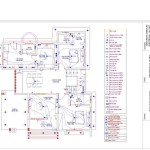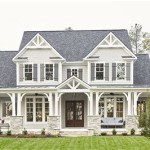Hoop House Plans: A Comprehensive Guide to Design, Construction, and Utilization
Hoop house plans represent a crucial component in modern agriculture, enabling extended growing seasons, improved crop yields, and protection against adverse weather conditions. This article will delve into the intricacies of planning, designing, and constructing hoop houses, focusing on various aspects that contribute to their effectiveness and longevity. Understanding the nuances of these structures allows growers to tailor them to specific needs and environmental factors, enhancing their overall agricultural productivity.
The surge in popularity of hoop houses, also known as high tunnels, can be attributed to their cost-effectiveness and versatility. Compared to traditional greenhouses, hoop houses offer a significantly lower initial investment while providing many of the same benefits. They are suitable for a wide range of crops, from vegetables and fruits to flowers and herbs, making them an attractive option for both small-scale and commercial growers.
Effective hoop house planning involves a systematic approach, considering factors such as site selection, materials, structural design, and environmental control. A well-thought-out plan ensures that the hoop house meets the grower's specific needs and optimizes crop production. Neglecting these initial considerations can lead to structural weaknesses, inefficient environmental control, and ultimately, reduced yields.
Key Point 1: Site Selection and Environmental Considerations
The location of the hoop house is paramount to its success. Several factors must be considered when selecting a suitable site. Sunlight exposure is arguably the most critical aspect. The ideal site should receive maximum sunlight throughout the day, particularly during the winter months when sunlight hours are limited. Orientation of the hoop house should be along an east-west axis to maximize sunlight capture throughout the day.
Soil drainage is another crucial element. A well-drained site prevents waterlogging, which can damage plant roots and create favorable conditions for disease. If the soil has poor drainage, amending it with organic matter or installing drainage systems may be necessary. Soil testing is recommended to determine nutrient levels and pH, allowing for appropriate amendments before planting.
Wind exposure also plays a significant role in site selection. While some wind is beneficial for ventilation, excessive wind can damage the hoop house structure, especially during storms. Selecting a site that is sheltered from prevailing winds, or implementing windbreaks such as trees or fences, can help mitigate this risk. However, ensure windbreaks do not significantly block sunlight.
Access to water and electricity is essential for irrigation and environmental control. A reliable water source is necessary for irrigating crops, and electricity may be required for heating, cooling, and lighting, depending on the climate and intended use of the hoop house. Consider the proximity of utilities when selecting the site to minimize installation costs.
Finally, accessibility to the site is important for transporting materials, equipment, and harvested crops. A site that is easily accessible by vehicles and other machinery will streamline operations and reduce labor costs. Consider the proximity of roads and the ease of maneuvering equipment within the hoop house.
Key Point 2: Structural Design and Material Selection
Hoop house structures typically consist of a series of arched or curved supports, covered with a transparent or translucent material. The design and materials used will influence the durability, cost, and environmental control capabilities of the hoop house. Several structural designs are available, each with its own advantages and disadvantages. The Gothic arch design, with its pointed roof, is excellent for shedding snow and preventing water accumulation. Quonset hoop houses, with their semi-circular shape, are relatively simple and inexpensive to construct.
The frame of the hoop house is often constructed from galvanized steel, PVC pipe, or wood. Galvanized steel is the most durable option, offering excellent resistance to corrosion and structural integrity. PVC pipe is a more affordable alternative, but it may not be suitable for larger structures or areas with heavy snow loads. Wood can be used for framing, but it requires regular maintenance to prevent rot and insect damage.
Covering materials include polyethylene film, polycarbonate panels, and woven polyethylene fabrics. Polyethylene film is the most common and cost-effective option. It is available in various thicknesses and UV stabilization levels. Polycarbonate panels are more durable and offer better insulation than polyethylene film, but they are also more expensive. Woven polyethylene fabrics are often used to provide shade or to protect crops from pests and diseases.
Proper ventilation is crucial for maintaining optimal temperature and humidity levels inside the hoop house. Ventilation can be achieved through natural means, such as side vents and roll-up sides, or through mechanical means, such as fans and vents. The design and placement of ventilation openings should be carefully considered to ensure adequate airflow and prevent overheating.
Anchoring the hoop house securely to the ground is essential for preventing damage from wind and storms. Various anchoring methods are available, including ground posts, stakes, and concrete footings. The choice of anchoring method will depend on the size and design of the hoop house, as well as the soil conditions.
Key Point 3: Environmental Control and Crop Management
Effective environmental control is essential for maximizing crop yields and quality inside the hoop house. Temperature, humidity, and light are the key environmental factors that need to be managed. Temperature control can be achieved through ventilation, heating, and shading.
Ventilation is the primary means of temperature control in hoop houses. Opening side vents and roll-up sides allows for natural airflow, which helps to dissipate heat and reduce humidity. During hot weather, shading materials such as shade cloth or whitewash can be used to reduce the amount of sunlight entering the hoop house, preventing overheating.
Heating systems may be necessary in colder climates to extend the growing season or to protect crops from frost damage. Various heating options are available, including propane heaters, electric heaters, and radiant heaters. The choice of heating system will depend on the size of the hoop house, the climate, and the cost of energy.
Humidity control is important for preventing disease and promoting healthy plant growth. High humidity can create favorable conditions for fungal diseases, while low humidity can lead to water stress. Ventilation, heating, and irrigation management are all important tools for controlling humidity levels inside the hoop house.
Irrigation is essential for providing crops with the water they need to grow. Drip irrigation is the most efficient method of irrigation in hoop houses, delivering water directly to the roots of the plants and minimizing water waste. Regular monitoring of soil moisture levels is important for ensuring that crops are receiving adequate water.
Crop rotation and pest management are also important aspects of hoop house management. Rotating crops helps to prevent the buildup of soilborne diseases and pests. Integrated pest management (IPM) strategies, which combine cultural practices, biological controls, and chemical controls, can be used to manage pests and diseases in a sustainable manner.
Soil fertility management is crucial for ensuring that crops have access to the nutrients they need to grow. Regular soil testing is recommended to monitor nutrient levels and pH. Organic amendments such as compost and manure can be used to improve soil fertility and structure. Fertilizers can also be used to supplement nutrient levels, but they should be applied judiciously to avoid nutrient imbalances.
By carefully planning and managing these elements, growers can optimize the performance of their hoop houses and achieve significant increases in crop yields and quality. The flexibility and adaptability of hoop houses make them a valuable tool for modern agriculture, enabling growers to meet the growing demand for fresh, locally grown produce.
Proper maintenance is vital for extending the lifespan of a hoop house. Regularly inspect the structure for any signs of damage, such as tears in the covering or corrosion of the frame. Promptly repair any damage to prevent further deterioration. Clean the covering material regularly to maintain optimal light transmission. Remove any debris or weeds that may accumulate around the base of the hoop house to prevent pest and disease problems.
Understanding the specific requirements of different crops and tailoring the hoop house environment accordingly is key to success. Whether it's adjusting ventilation for delicate leafy greens or implementing heating for tomatoes needing warmer temperatures, a proactive approach to environmental control will maximize the benefits of these structures.
Successful utilization of hoop houses demands a continuous learning process. Growers should stay informed about the latest advancements in hoop house technology, crop management techniques, and pest and disease control strategies. Experimentation and adaptation are essential for optimizing hoop house performance and achieving consistent, high-quality yields.

Pvc Hoop House Plans Build Your Own How To Plan

Building A Mini Hoop House Raised Garden Beds Diy Vegetables Greenhouse Plans

How To Build An Inexpensive Hoop Style Greenhouse Alberta Home Gardening

Diy Hoop House Plans Make The Most Of Your Growing Season With This Hands On Project Greenhouse Pvc

Build Your Own Hoop House Backwoods Home

How To Build A 300 Square Foot Windproof Hoop House For Under 500

Diy Greenhouse Purlins Carriage Bolts Wiggle Wire Hoophouse Oregon

Hoophouse Greenhouse Diy Design Snow Proof Mr Crazy Kicks

How To Build Your Own Hoop House That Glides Open And Close Diy Projects For Everyone

Hoop House Construction Plans Kerr Center








